The latest GT Force was introduced part way through 2021 and has since gone on to claim some seriously impressive results at the Enduro World Series.
Designed around a high main pivot, the latest Force, like Cannondale’s Jekyll, is the brainchild of engineer Luis Arraiz. It is, unsurprisingly, designed to go fast downhill.
The Carbon Pro sits in the middle of the three carbon Force offerings (there are two alloy frame builds, but they use the previous suspension layout) and judging by the spec sheet, should be ready to race from the get-go.
But just how well does the high-pivot suspension design work and how does the revised geometry feel on the hill?
GT Force Carbon Pro frame and suspension details
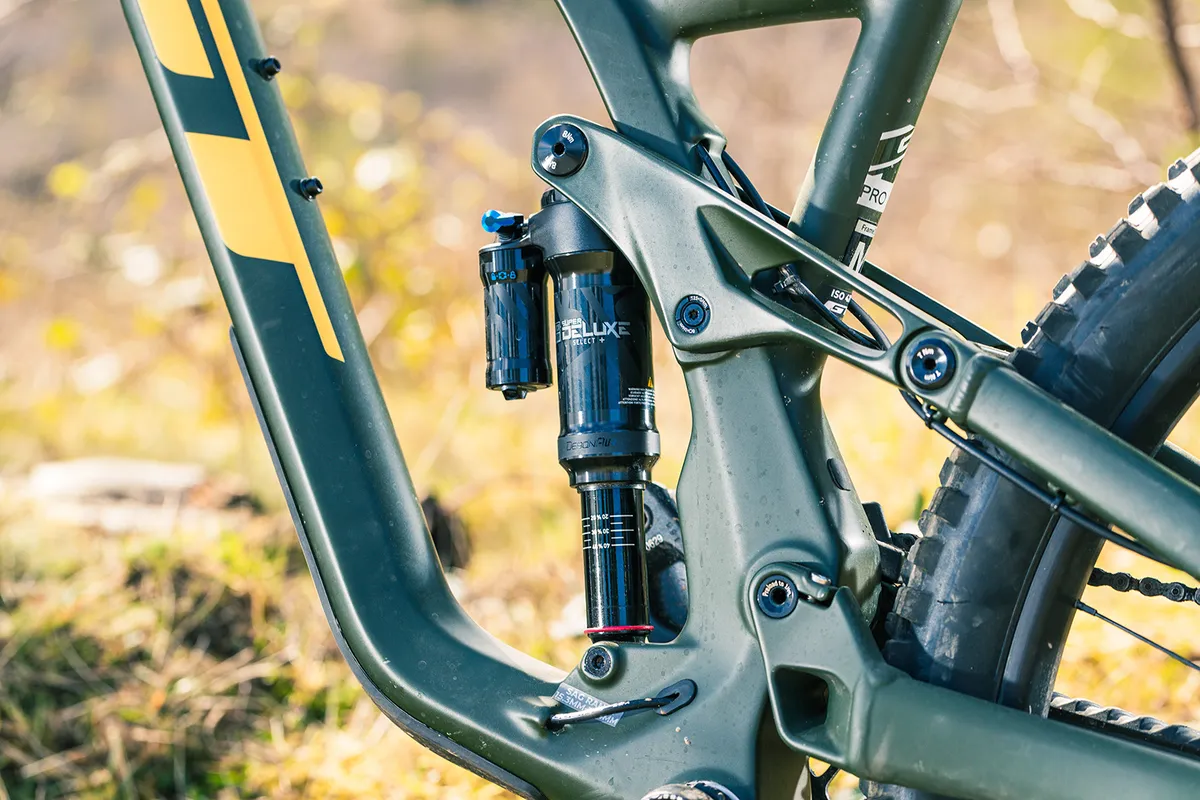
One of the most prominent features you’ll notice on the Force is the high main-pivot suspension design. This layout uses a high-pivot and four-bar linkage design to deliver 160mm of rear wheel travel.
Why go for a high main pivot? High-pivot designs help to create a more rearward rear wheel-axle path, which in theory, helps the rear wheel to move back, up and over obstacles with more ease than their lower-pivot equivalent.
To mitigate the pedal kickback – a trait inherent with high-pivot suspension designs, caused by the distance between the chainring and cassette increasing as the suspension is compressed, resulting in ‘chain growth’ – GT has included an idler pulley complete with compact chainguide.
When it comes to the axle path, the Force’s rear wheel axle moves up and backwards, reaching a maximum of around 10mm behind its starting point between 70mm and 100mm into the 160mm of travel. After that, as it continues through its travel, the axle begins to arc gently forwards and upwards.
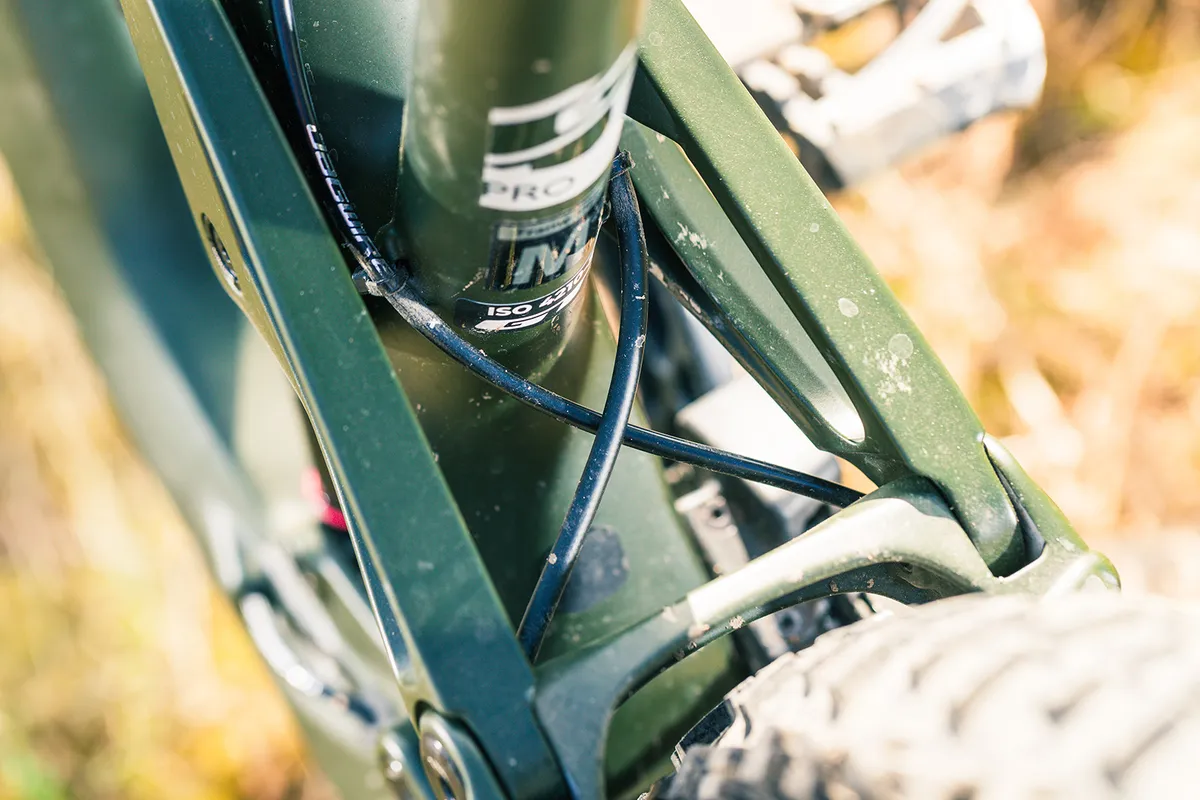
Compared to the previous-generation Force, GT has upped the anti-squat of the latest bike in a bid to make it sprightlier in its climbing gears. According to the data I’ve been given, at around the sag point, the anti-squat value looks to be around the 107 per cent mark when using the biggest 50t sprocket at the rear.
In terms of construction, the Force is built around 29in wheels and there’s currently no mixed-wheel-size option available. That said, many will have seen various GT Factory team members riding the Force with a 29in front wheel and 27.5in rear wheel, suggesting it is possible to run this setup.
It’s only available (with this suspension design) with a carbon front triangle, too. This is then mated to an alloy rear end.
Nice touches include the tube-in-tube internal routing, which should help make maintenance that bit easier when the time comes, along with a decent amount of integrated rubberised frame protection on the underbelly of the frame and along the driveside chainstay and seatstay.
GT Force Carbon Pro geometry
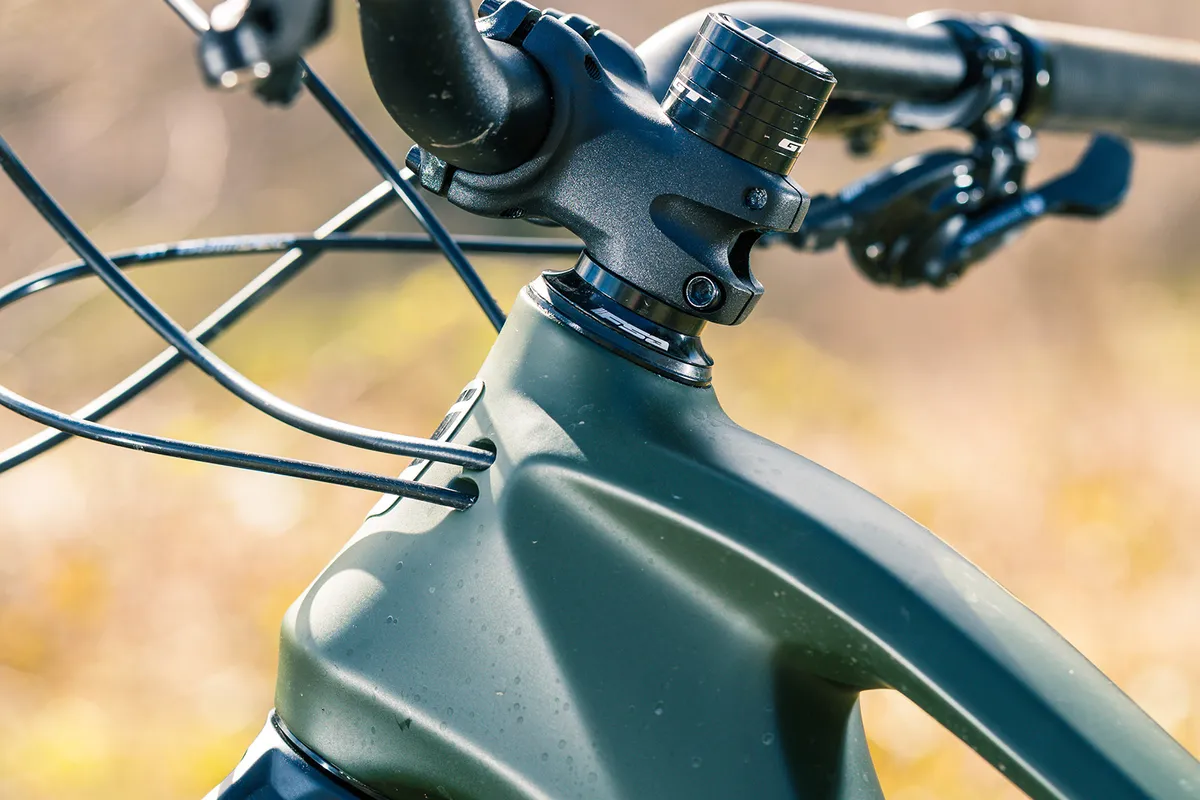
The Force is available in four frame sizes (small through to extra-large), which is nice to see on a full-blown 29er (a number of brands only offer three sizes of their big-travel, big-wheel offerings).
What’s more, GT has included some adjustment at the chainstay, allowing riders to switch between the 435mm shorter setting and the 445mm longer setting. This is good for a couple of reasons.
Firstly, the scope to lengthen the wheelbase means you can easily boost stability if the terrain or speeds warrant it.
Secondly, this’ll help taller riders feel more centred between the wheels – something they might normally struggle with on larger frame sizes that have a long front centre but the same length effective chainstays as a small or medium frame.
High-speed stability shouldn’t really be an issue, though, thanks to the slack 63-degree head angle and stretched-out 815mm front centre.
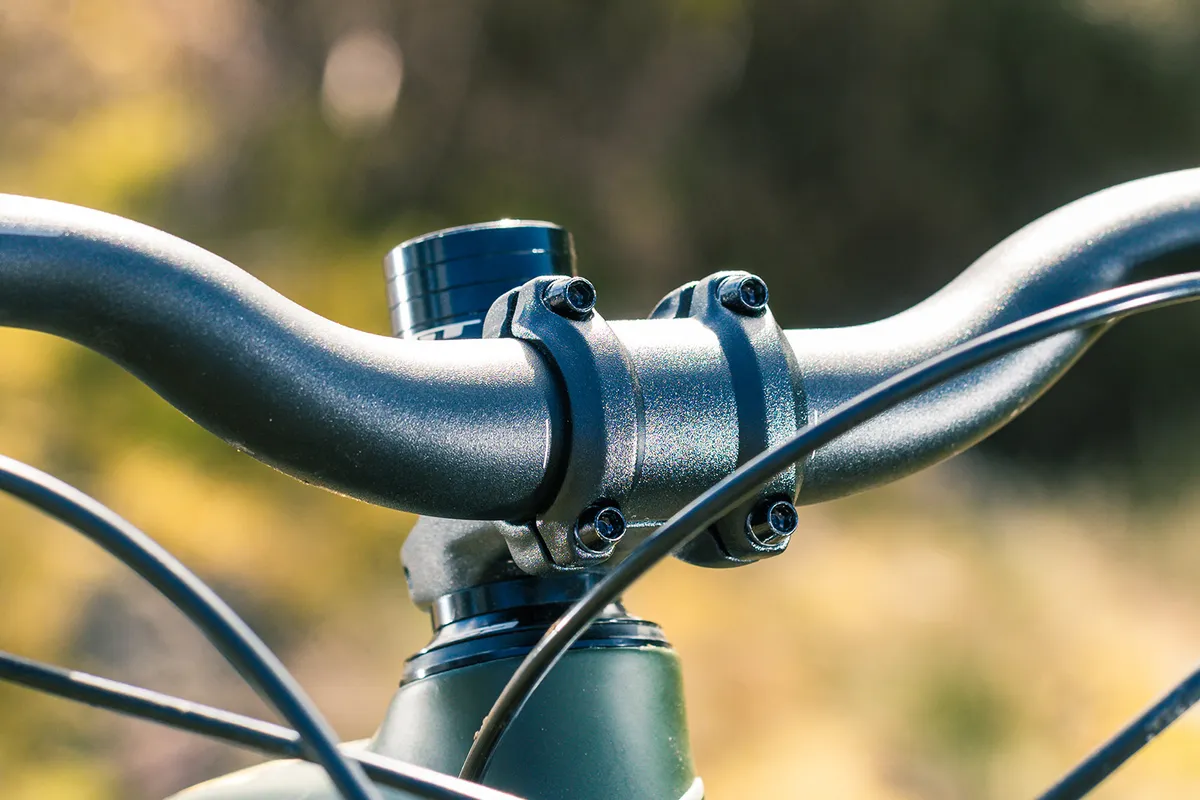
The Force is decently roomy when stood up out of the saddle, thanks to the 455mm reach on the medium.
In a bid to help position the rider in a comfy yet efficient place for climbing, the Force has a seriously steep 78.4-degree seat tube angle (measured with my preferred saddle height). This should, in theory, help to keep your hips right over rather than behind the bottom bracket.
While GT has been suitably radical with some of the angles, the 345mm bottom bracket does seem a little conservative in comparison, especially when there are other bikes with more travel in the enduro category sporting lower numbers.
| | S | M | L | XL |
|---|---|---|---|---|
| Seat angle (degrees) | 78 | 78 | 78 | 78 |
| Head angle (degrees) | 63.5 | 63.5 | 63.5 | 63.5 |
| Chainstay (mm) | 435/445 | 435/445 | 435/445 | 435/445 |
| Seat tube (mm) | 380 | 410 | 445 | 500 |
| Top tube (mm) | 563 | 590 | 617 | 654 |
| Head tube (mm) | 110 | 120 | 130 | 140 |
| Fork offset (mm) | 44 | 44 | 44 | 44 |
| Trail (mm) | 139 | 139 | 139 | 139 |
| Bottom bracket drop (mm) | 30 | 30 | 30 | 30 |
| Bottom bracket height (mm) | 347 | 347 | 347 | 347 |
| Wheelbase (mm) | 1,211/1,221 | 1,240/1,250 | 1,270/1,280 | 1,309/1,319 |
| Standover (mm) | 725 | 730 | 740 | 760 |
| Stack (mm) | 627 | 636 | 645 | 654 |
| Reach (mm) | 430 | 455 | 480 | 515 |
GT Force Carbon Pro specifications
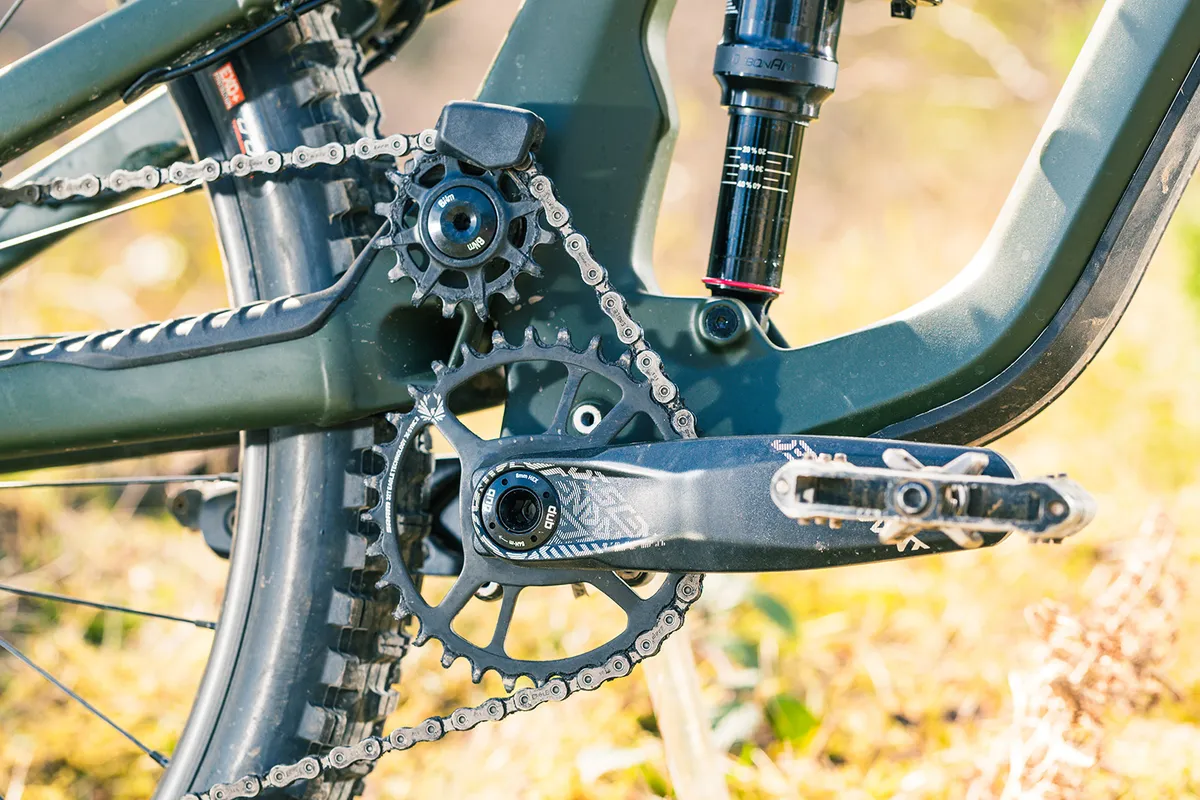
When it comes to the spec, the GT Force Pro is somewhat of a mixed bag with some real hits but a couple of misses, too.
Considering the price, the predominantly SRAM NX Eagle gearing is okay but not great.
GT has bolted a GX Eagle derailleur out back, but it’s paired with the 11-50t NX Eagle cassette. That’s not the end of the world by any stretch and the slightly narrower range is easy enough to live with.
It’s a heavy bit of kit, though, and it would have been nice to have it matched to a GX Eagle cassette instead.
On the plus side, because it’s running a GX Eagle derailleur, should you want to upgrade to a fancier cassette with a 10-52t spread, it’ll work just fine. You will, however, need to replace the freehub body for SRAM’s XD driver instead.
There’s no moaning from me about the tyre combo, because I’m a big fan of the Maxxis Assegai up front and Minion DHR II at the rear. Both use the brand’s 3C MaxxTerra compound and the EXO+ casing.

The wheels beneath the rubber are okay, although a little underwhelming considering the asking price. WTB ST i29 TCS rims are laced to Formula hubs, with the rear hub featuring a somewhat slow pickup. The rims may be easy enough to dent when riding hard, but can be straightened easily enough in my experience.
I had a few comments on the own-brand bar and stem looking a little cheap, but I had no complaints regarding their performance. That said, the bar is quite tall (30mm rise) and I’d have preferred a lower rise, ideally.
It may sound as though it’s all doom and gloom, but that isn’t the case.
GT has ploughed money into the suspension here. The Force Pro uses a RockShox ZEB Select+ fork up front. This particular model features 170mm of travel and uses the impressive Charger 2.1 RC, which offers some useful low-speed compression and rebound-damping adjustment.
At the rear, a RockShox Super Deluxe Select Plus features easy-to-adjust rebound damping, along with a threshold lever that helps properly firm up the low-speed compression damping, significantly calming the suspension down to make climbing that bit easier and potentially more efficient.
Meaty SRAM Code R brakes help bring the Force Pro to a stop and clamp onto 200mm rotors at both the front and rear. At the lever, you get nice and easy tool-free reach adjustment.
The overall weight for my medium Force Pro (without pedals) was 16.43kg.
GT Force Carbon Pro ride impressions

As the Force Pro is designed to be an all-out winch up, plummet down enduro bike, I rode it across a wide variety of terrain in order to really put it to the test.
This included everything from steep, natural singletrack covered in roots and rocks, to high-speed bikepark runs as well as mellower jump lines.
Of course, being an enduro bike, it needs to be pedalled back up the hill too, so I made sure I did more than my fair share of climbs aboard the Force, too.
Setting up the GT Force Carbon Pro
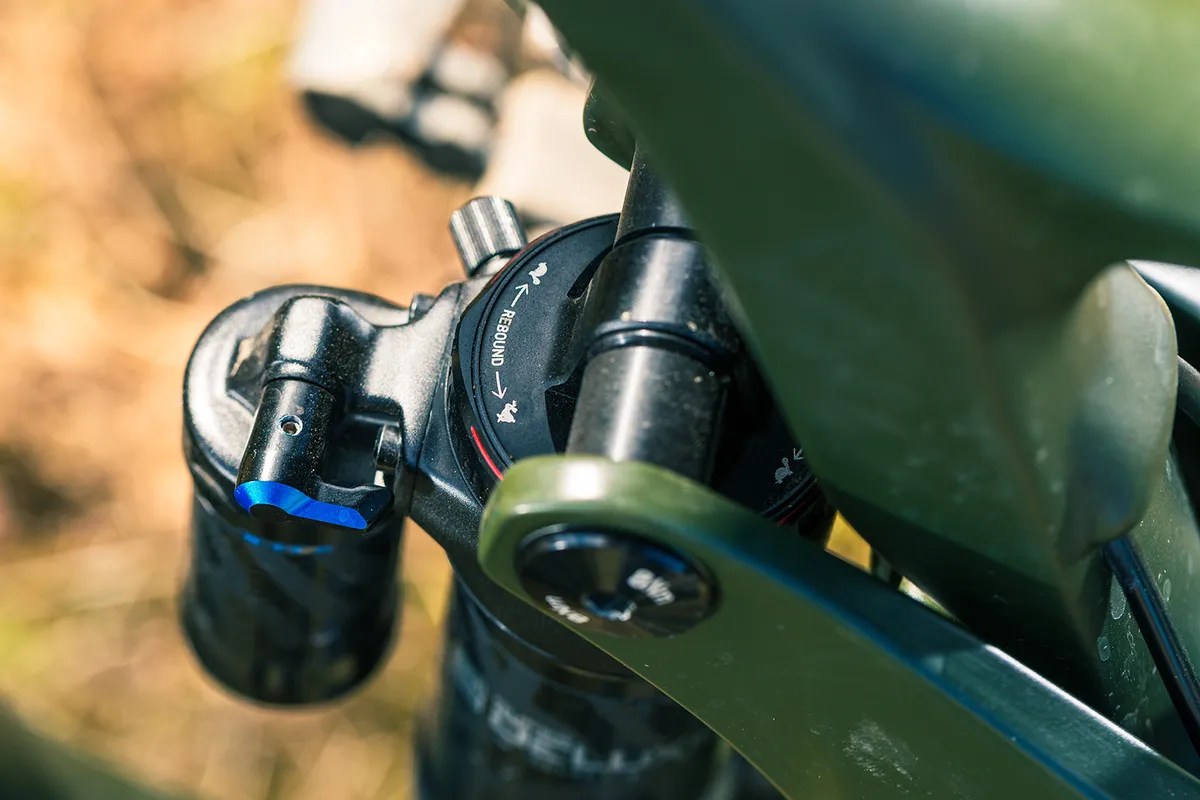
Getting the Force Pro set up to suit my preferences was really straightforward and I managed to get to a good place early on in testing.
Due to the 30mm rise bar, I had to drop it lower on the fork steerer to make the front end feel more manageable. Thankfully, GT leaves the fork steerer with enough space (and spacers) to enable this.
At the rear, there’s a sticker just below the bottom shock mount that notes the ideal sag range, which makes things easier. I ended up with two volume spacers in the shock to help it ramp up towards the end of the travel and running just over 25 per cent sag.
I had to run the rebound adjuster fully open, though, and only then did I find it just about fast enough for my liking. At 68kg, I’m not particularly heavy, which suggests this could cause issues for lighter riders.
Up front, setting up the fork was quick and easy. I used one volume spacer and 14 clicks of rebound damping (counted from fully closed) with the low-speed compression damping left fully open.
GT Force Carbon Pro climbing performance
Get the Force pointed uphill and you’ll notice instantly that steep seat tube angle. It places you in quite an upright position on the bike and feels really comfortable on long climbs or steep inclines.
I never felt I needed to shift my weight around to compensate for front-wheel lift or in a bid to boost rear-wheel traction. Instead, you can simply sit and spin the cranks while making your way up to the top of the hill.
There’s not a whole lot of suspension movement when seated and pedalling either, which makes mellower climbs easy enough to tackle.
The rear wheel continues to track the trail and does a good job of finding grip when it’s needed. At no point did I need to firm up the shock, which is a plus on technical ascents.
However, try to tackle something steeper in the bigger 50t sprocket and the GT doesn’t feel as eager or as efficient as some.
In these situations, at lower cadences, when really having to wind on the power to clean the climbs, I felt I had to give it more grunt to reach the summit than on other bikes I was back-to-back testing the Force with.
Sure, some of this is down to the weight and relatively tall gearing. However, I did the same climbs on other bikes at similar weights, with the same or heavier tyres and with gearing that was close to, if not the same as, that of the Force.
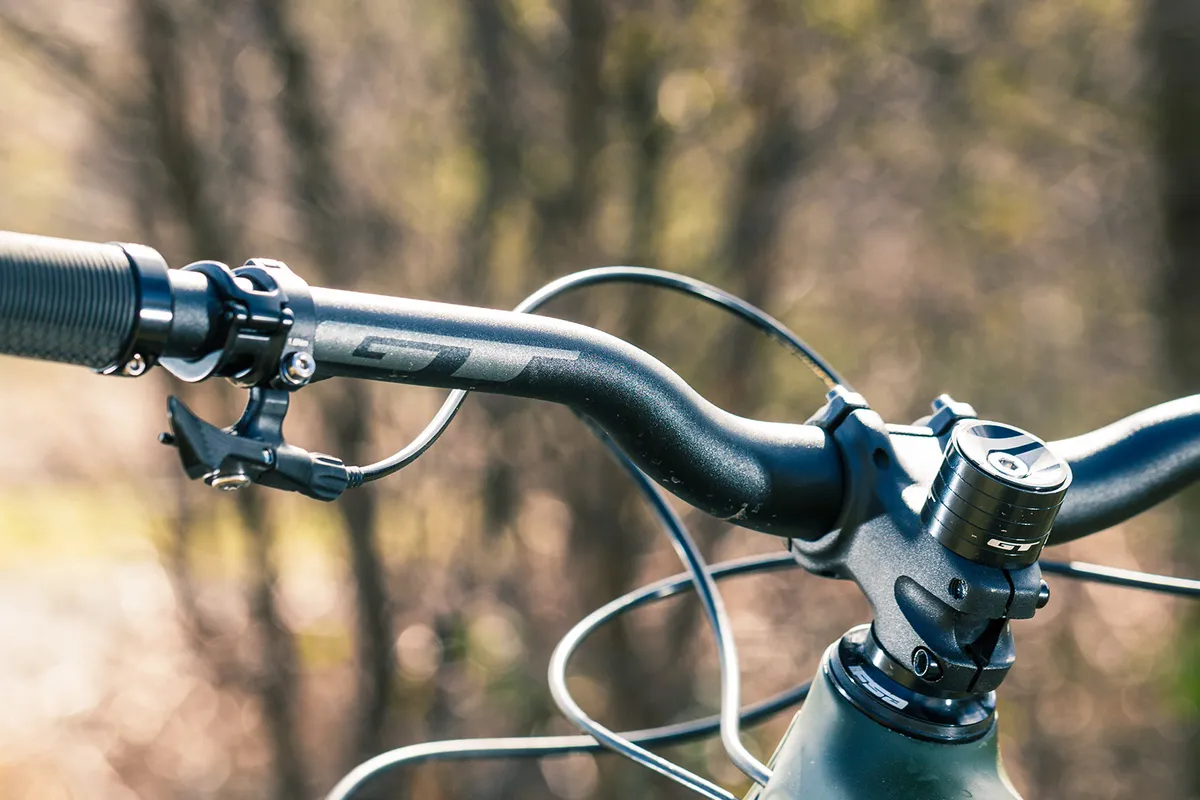
It’s hard to pinpoint exactly what was creating this sensation. While the main pivot is located in a similar position to that of the Cannondale Jekyll 2 (which is only slightly lighter but uses the same tyres), it wasn’t a trait I experienced on the Jeykll.
The GT’s gearing isn’t as easy as that of the Jekyll 2, but this was something other than that. The GT certainly had more idler noise in the biggest sprocket compared to the Cannondale, which uses a different chainline. It’s hard to say whether this is the cause for sure, though.
Either way, I’d suggest switching out the standard 32t chainring in favour of a smaller 30t ring just to make life a little easier when tackling steep inclines.
Of course, you’re not continually clawing your way up steep hillsides, and on most fireroad climbs or technical sections of uphill, the Force made its way up without too much grumbling from me.
GT Force Carbon Pro descending performance
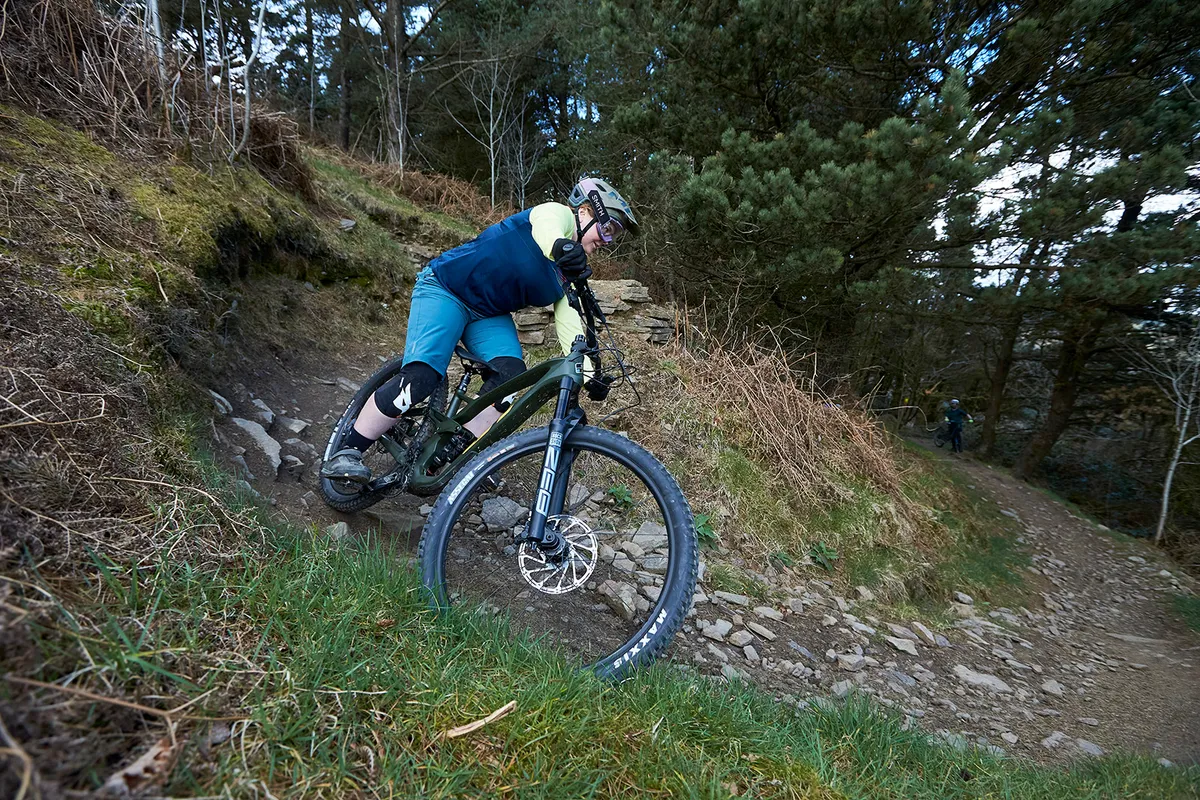
Those big efforts on the climbs are more than rewarded when it comes to the descents. Here, the stretched-out geometry and incredibly smooth rear suspension make the Force a really serious operator.
The nastier the terrain gets, the more confident you’ll feel because this thing simply flattens sections of chunder and manages to find all the traction you could ever want in the process.
During repetitive impacts, when slapping through pronounced sections of roots or jagged rocks, the Force manages to scalp the square edges off the tops of the bumps, taming seemingly terrifying sections and making things far more manageable at speed.
When tackling steep, loose, natural trails, the Force enables you to confidently pick a line and stick to it. And even if you do drift a little wayward, the Force is more than forgiving enough to let you get away with it.
It’s not a bike that needs finessing down the trail if you’re too tired. Drop your heels, point it where you want it to go and it’ll handle it.
It helps that the Maxxis rubber feels predictable across a wide variety of terrain. Even when skimming across wet roots and rocks, the tyres managed to offer consistent levels of grip, which really helps when it comes to selecting lines and understanding how the bike will react.
Room for improvement
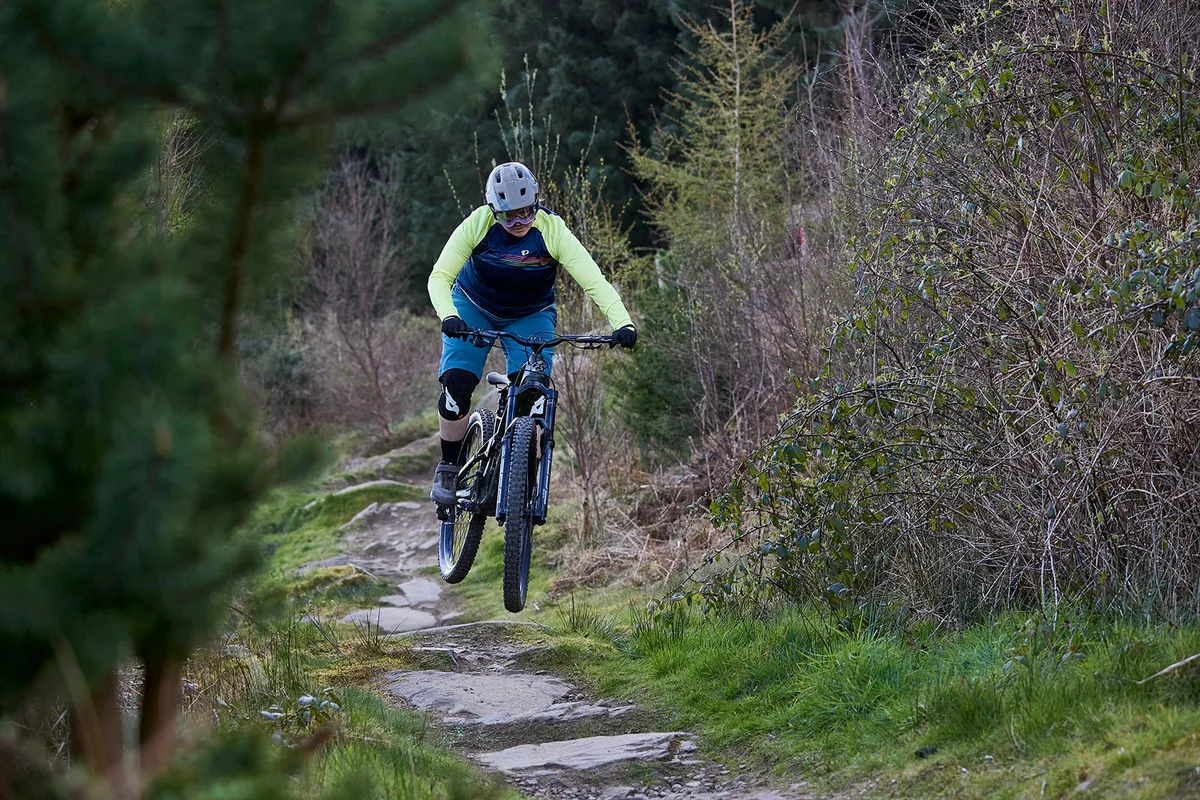
There’s no getting away from just how capable and fast the Force can be downhill, but it’s not perfect.
Although it’s a confident bike under heavy braking, with what feels like no shortage of grip, the Code R brakes don’t feel quite as crisp as they could.
While they’re powerful, they’re not as smooth or easy to pull as their pricier counterpart, the Code RSC or for that matter, cheaper SLX or non-series Shimano brakes.
They’ll do the job well enough but will, at times, need a bit more rider effort.
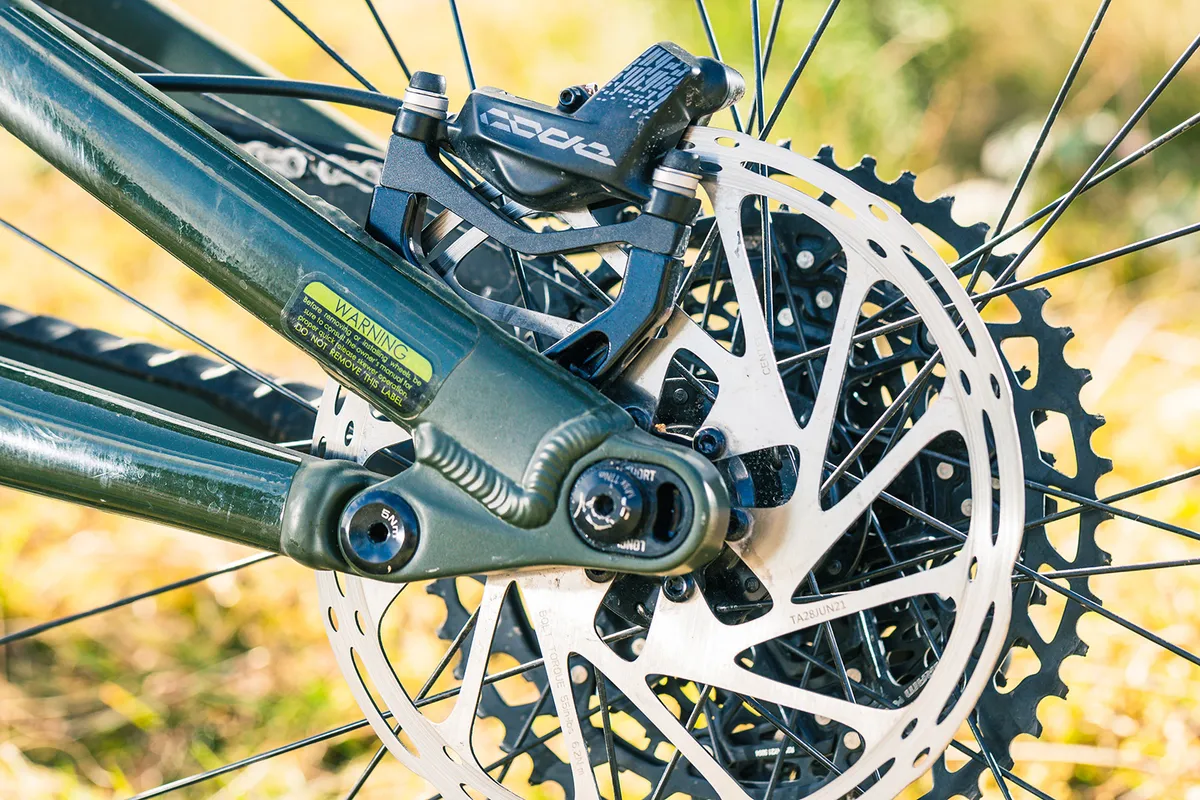
Through slow turns with awkward exits, the slow-to-engage feels a little lazy when you’re clawing at the pedals, getting on the gas in order to get back up to speed. In really rocky terrain, the rear hub can sound quite clangy, too.
And here, in slower, tighter sections of trail, the Force doesn’t feel as agile or nimble as some of its closest rivals.
There’s still ample support through the suspension when loading the bike through turns or off the lips of jumps, though, but it’s a big bike and properly excels when the speeds creep up and bumps come thick and fast
Maintaining momentum
If you’re a fan of flat-out fast riding and love moving at high speeds, the GT Force Carbon Pro is a bike that will impress consistently and bring a smile to your face.
When tackling full-on downhill tracks, the Force carries speed almost effortlessly, dulling impacts and muting chatter without seeming to impinge momentum. As I’ve already touched on, it might not be the most sprightly bike to get up to speed, but once you’re there, it’ll take quite a bit to knock the Force’s velocity.
That stretched-out front centre, slack head angle and generous reach all help deliver masses of stability when it’s needed most. With the suspension working away furiously beneath you, things feel calmer, allowing you to look further ahead and pick lines as early as possible.
How does the GT Force Carbon Pro compare?
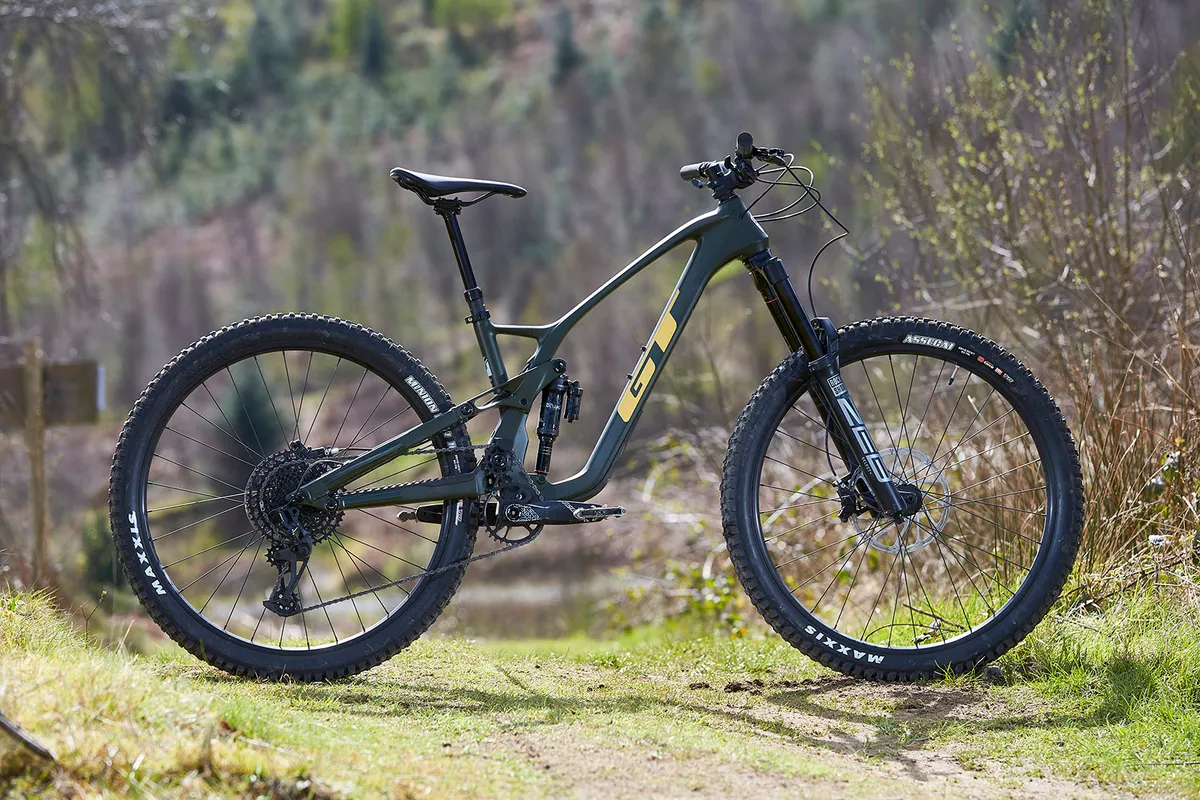
As I’ve already mentioned, while the Force Carbon Pro is more than happy in most climbing situations, it’s not as easy-going as many of the bikes in this category, especially when the gradient steepens.
That’s not the end of the world though, because it descends with serious pace and properly chews through bumps.
But it’s certainly less of an all-rounder compared to the likes of the Cannondale Jekyll 2, which feels easier-going uphill, more agile and still incredibly capable when pointed downhill.
GT Force Carbon Pro bottom line
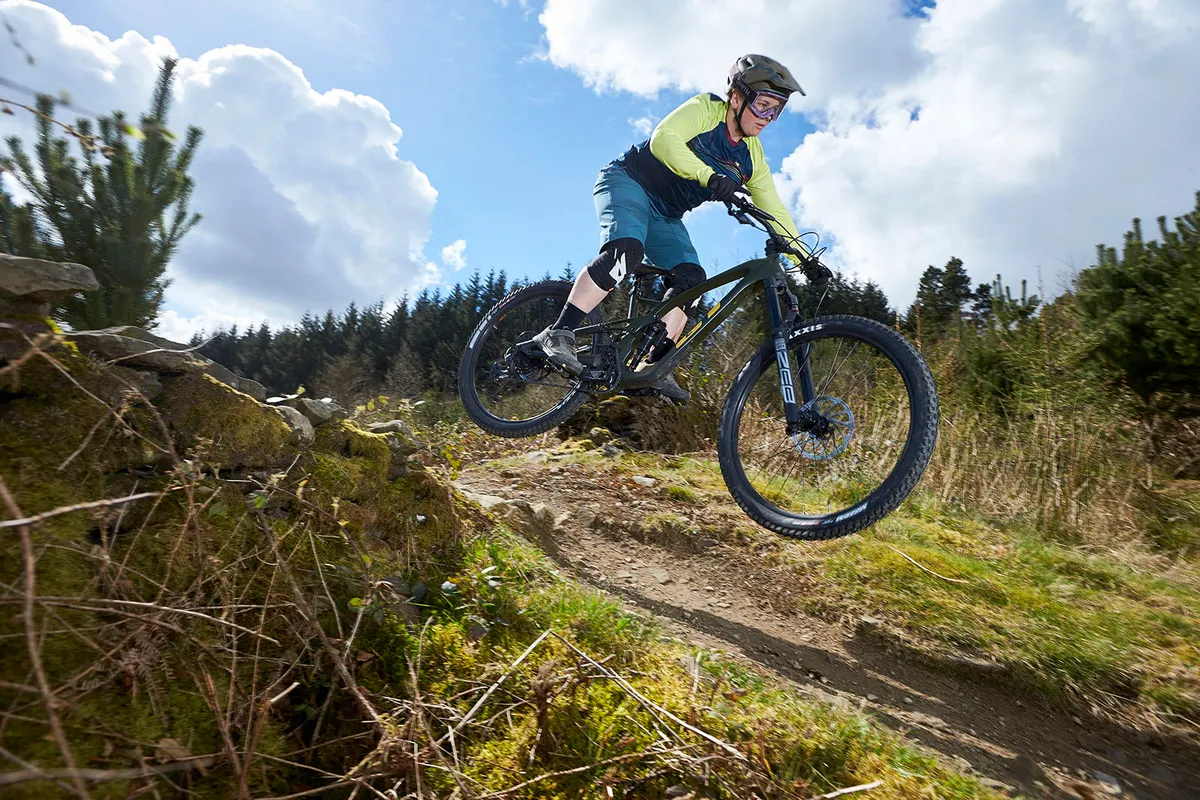
The GT Force Carbon Pro is an incredibly impressive descender, smoothing out the trail and creating traction where other bikes will falter.
Its climbing prowess is something of a mixed affair and other bikes simply feel as though they take less effort to pedal up steep climbs than the Force thanks to a number of factors.
No, it’s not the best all-rounder or the most agile of bikes and for the money, the parts are okay but not great, but when the trail gets rowdy, the Force is truly a bike to be reckoned with.
Enduro Bike of the Year 2022 | How we tested
Designing a high-performance enduro bike is all about balance.
While there’s no denying these bikes need to descend with the confidence and poise of a full-blown downhill bike, they still need to be pedalled back up to the top of the hill.
But, more than that, they also need to be built to last with components that can take a serious beating.
To be crowned as the best enduro bike on test, we were looking for a bike that felt pleasant enough on the climbs (no enduro bike will ever be a cross country-like mountain goat!) and easy to ride fast when pointed back downhill.
Testing the bikes required a serious amount of riding over a 12-week period. The terrain needed to be varied, too. Testing included everything from steep, natural trails covered in roots and peppered with rocks and mud, through to faster, high-speed bike park tracks with wheel-destroying rock gardens and chunky jumps.
We rode all of the bikes on test back-to-back to pin down the differences and mixed up the order in which we rode the bikes to see just how each machine felt when we were fresh – and not so fresh.
Our 2022 Enduro Bike of the Year contenders are:
- Cannondale Jekyll 2
- Canyon Torque CF8
- GT Force Pro
- Marin Alpine Trail XR
- Nukeproof Giga 297 Carbon Elite (category winner)
- Propain Tyee AL 29 Performance
- Santa Cruz Bronson C R
- Whyte G-180 RS MX
Thanks to…
Thanks to our sponsors MET Helmets, Bluegrass Protection and BikePark Wales for their support in making Bike of the Year happen.
Product
| Brand | gt |
| Price | 7000.00 AUD,4700.00 GBP,5050.00 USD |
| Weight | 16.4300, KILOGRAM (M) - without pedals |
Features
| Fork | RockShox ZEB Select+, 170mm (6.7in) travel |
| br_stem | GT Alloy, 50mm |
| br_chain | SRAM NX Eagle |
| br_frame | Carbon front triangle, alloy rear triangle, 160mm (6.3in) travel |
| Tyres | Maxxis Assegai 3C MaxxTerra EXO+ 29x2.5in (f), Maxxis Minnion DHR II 3C MaxxTerra EXO+ 29x2.4in (r) |
| br_brakes | SRAM Code R (200mm rotors) |
| br_cranks | Truvativ Descendant 6K |
| br_saddle | Fabric Scoop Shallow Sport |
| br_wheels | WTB ST i29 TCS rims on Formula hubs |
| br_headset | FSA No.57 |
| br_shifter | SRAM NX Eagle |
| br_cassette | SRAM NX Eagle |
| br_seatpost | GT DropKick, 150mm |
| br_gripsTape | Fabric Funguy |
| br_handlebar | GT alloy, 780mm |
| br_rearShock | RockShox Super Deluxe Select+ |
| br_bottomBracket | SRAM DUB |
| br_availableSizes | S, M, L, XL |
| br_rearDerailleur | SRAM GX Eagle |
